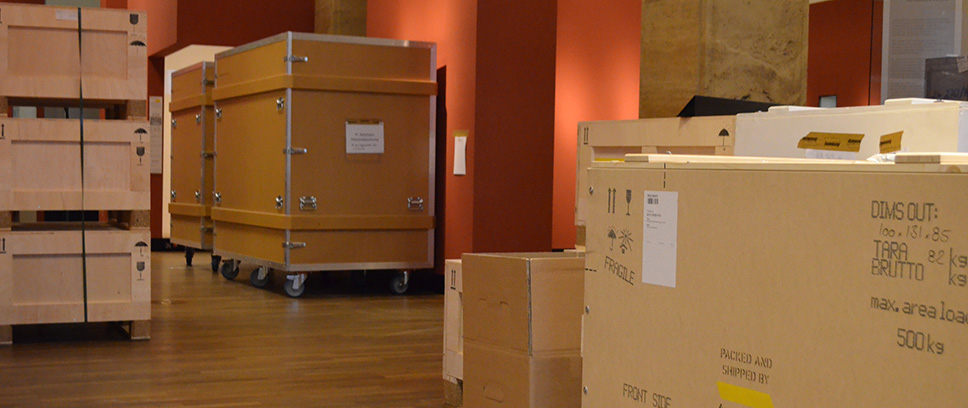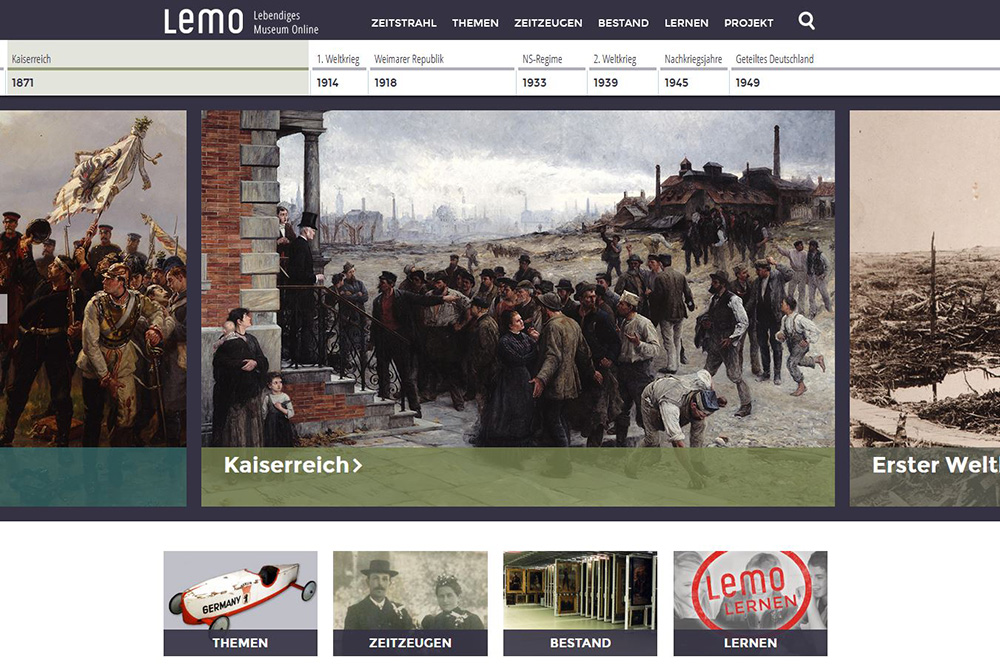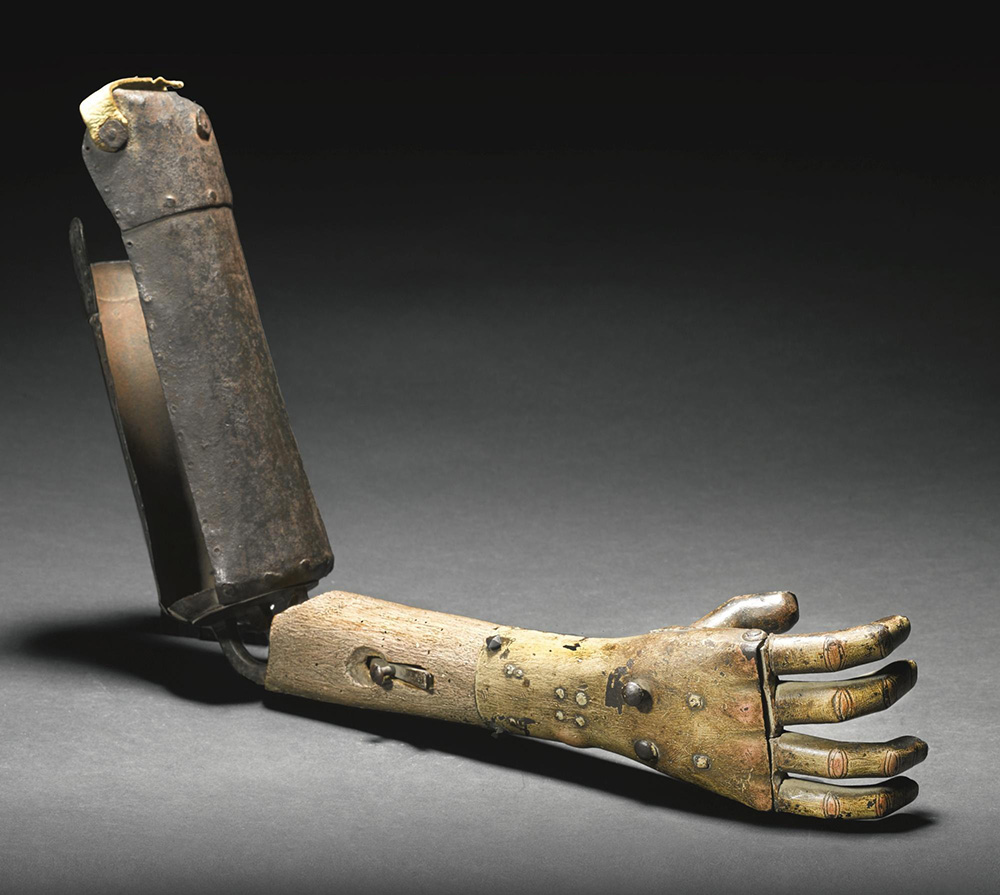
5 Questions for: Oliver Schweinoch
15 March 2022
The Zeughaus building at the Deutsches Historisches Museum has closed for renovations and the permanent exhibition “German History from the Middle Ages to the Fall of the Berlin Wall” is being dismantled and packed away. But even while that’s going on, the DHM is busy working on a new permanent exhibition – a mammoth project that affects all departments at the museum. In the interview series “5 Questions for …”, staff from various departments have their say and share their impressions and memories of the previous permanent exhibition and tell us what they are up to now. Oliver Schweinoch is responsible for LeMO, which stands for “Lebendiges” (or Living) Museum Online, a digital learning platform on German history. Oliver explains how the last permanent exhibition shaped his work and which objects linger in his memory.
Mr. Schweinoch, which article on LeMO has had the most clicks so far?
Oliver Schweinoch: We don’t really know the answer to that question. LeMO has been online for many years now and over the course of that time there have been several changes to the technical tools. In addition, here at the Deutsches Historisches Museum we’re solely responsible for the period 1815 to 1945, while the following decades are the responsibility of our colleagues at the Haus der Geschichte in Bonn, whose specific remit is the history of West Germany and the Federal Republic post reunification.
What we can do, however, is look back at past years and find out which articles received the most clicks on a day-by-day basis. So, if we take 23 February 2022, for example, that would be our chronicle of the year 1939 and the chapter intros on the Nazi regime, WWII, and the Weimar Republic respectively. In terms of number of clicks, these topics always attract the most users; you might call them the quintessential subjects of choice for anyone interested in German history. And when it comes to the biographies, Bertolt Brecht is a perennial favourite.
What’s clear is that current affairs, politics, and topics reported on by the media have a noticeable influence on clicks. So, when a new film adaptation of an Erich Kästner novel comes out, for instance, and it gets a lot of attention in the press, then you’re bound to see an immediate uptick in clicks on his biography.

Was there an object in the last permanent exhibition that particularly caught your attention and perhaps also features on LeMO?
There probably wasn’t a single time that I walked past the prosthetic arm from the early 1500s, the so-called “Grüninger Hand”, without coming to a stop just a few steps later and doing an about-turn to take a closer look, if only for a second. The details, the rendering of the fingernails and the phalanges – they were all utterly compelling. Looking at it, lots of things would pop into my head: like, here was this man who had experienced and survived a horrific loss, a terrible trauma, who was given a prosthetic wooden arm and, who knows, might have lived an ordinary life of some kind once he’d gotten used to it. I would ask myself very mundane questions: Could this hand hold a spoon? What did he eat? The wooden arm instantly leads to the subject of food and dining, but also to the subject of medicine and this real person’s feelings. So, in short, this object is a great springboard into other topics and a way to talk to others – and to yourself.
The prosthetic arm is also an incredibly rare object. However, because LeMO only starts in the 1800s, we don’t have an article on it – it’s just the object that most stuck out in my mind.

The last permanent exhibition featured about 5,500 objects at last count, am I right? How many objects are featured on LeMO?
LeMO currently contains 5,085 objects, taken from the collections of the DHM, Haus der Geschichte, and the holdings of our third project partner, the Bundesarchiv (Federal Archives). Because the DHM covers the largest slice of history – 130 years of the 200 featured on LeMO in all – the majority of objects comes from our collection. However, that number is always changing – we routinely deselect certain objects. We review their content or swap them for other objects or delete them for technical reasons.
Was LeMO already up and running when the last permanent exhibition opened in 2006?
Yes, LeMO was already online then. In fact, the project started in 1998/99, when work on that permanent exhibition was already underway and the museum first came up with the idea of presenting some of the collection and historical content online. What we initially envisaged was a kind of virtual museum tour through a specially designed virtual exhibition that users would be able to move through from a first-person perspective. However, we didn’t have the technical capability for that at the time. So the result was a mixture of digital encyclopaedia and collection presentation.
We were able to persuade many historians involved in curating and commenting on the permanent exhibition at that time to compose texts on their topic of choice.
Is there anything in the new permanent exhibition that you would like to see featured again on LeMO?
We’ve already had discussions on this point, but it’s still too early to say what exactly.
Currently, we are in exchange with the team of the exhibition “Roads not Taken”, which opens in December 2022. Here, for the first time, we are trying to think about and connect LeMO and an exhibition more closely. It will be interesting to see what works well and what is difficult. From this, insights for the eventual integration of LeMO in the new permanent exhibition can then certainly be derived.